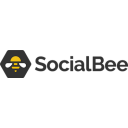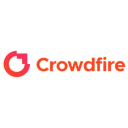Planable vs Hootsuite: Which social media tool is best for your team?
- 01Planable vs Hootsuite: overview
- 02What's the difference between Planable and Hootsuite?
- 03Planable pros and cons
- 04Hootsuite pros and cons
- 05Planable compared to Hootsuite
- 06Hootsuite compared to Planable
- 07Features comparison
- 08Planable vs Hootsuite: Which is the best for your business?
- 09Promotions on Content Marketing software
- 10Alternatives to Planable & Hootsuite
Access up to $150 savings on Planable & $747 on Hootsuite
Planable
$150 off initial purchases
Access up to $150 savings on Planable & $747 on Hootsuite
Effective social media management is essential for businesses of all sizes to maintain an engaging online presence. Without the right tools, it can be difficult to stay on top of content scheduling, collaboration, and analytics, leading to missed opportunities and inefficient workflows.
Fortunately, there are several social media management platforms available to help you streamline your content creation process, manage campaigns, and collaborate with your team. In this article, we compare Planable vs Hootsuite, two popular social media management tools. Read on for our detailed comparison of features, usability, and pricing to help you find the platform that best fits your business needs and budget.
Planable vs Hootsuite: overview
Planable and Hootsuite are two leading social media management platforms, each offering unique strengths and features for content creation and team collaboration.
Planable excels in fostering seamless collaboration for social media teams by offering real-time content review and approval workflows. With its intuitive, visual content calendar, teams can easily draft, preview, and approve posts before they go live, making it ideal for agencies and businesses that require a highly collaborative process. On the other hand, Hootsuite is known for its versatility and comprehensive range of functionalities. It supports a wide array of social media platforms, provides advanced analytics, and offers extensive scheduling capabilities, making it a powerful tool for larger teams managing complex social media strategies.
To decide which platform is best suited for your needs, it's essential to compare their features across key factors such as collaboration tools, user interface, scheduling capabilities, analytics, and pricing. This comparison will help you choose the right solution for your social media management goals.
What's the difference between Planable and Hootsuite?
While both Planable and Hootsuite are robust social media management tools, they serve slightly different purposes depending on your team's needs and the scope of your social media strategy. Planable focuses heavily on collaboration and content approval workflows, while Hootsuite provides a more comprehensive suite of social media management features, including analytics and post scheduling.
The primary difference between Planable and Hootsuite lies in their approach to content creation and collaboration. Planable is designed for teams that need a streamlined, visual-first approach to content management. It allows users to draft, preview, and approve social media posts in a clear, organized interface, making it ideal for teams that require frequent feedback loops and approval processes. Its core strength is the ease with which teams can collaborate in real time, commenting directly on posts and seeing content as it would appear once published.
Hootsuite, in comparison, is a more versatile platform, supporting a broader range of social media management tasks. While it also offers content scheduling and approval features, Hootsuite’s strength lies in its ability to handle larger-scale social media strategies. It provides detailed analytics, integration with a wide range of social networks, and advanced post-scheduling capabilities, making it well-suited for businesses that need in-depth reporting and strategy insights.
A key difference between the two platforms is pricing and feature scope. Planable offers a simpler, more affordable solution for teams focused on collaboration, with pricing that scales based on the number of workspaces and users. Hootsuite’s pricing tends to be higher, but it includes more comprehensive social media management tools, such as advanced analytics and advertising features.

$150 off initial purchases on Planable
Get $150 off initial purchases on Planable and up to $150 savings with Secret.
Planable pros and cons
What are the advantages of Planable?
- Real-time collaboration: Planable is excellent for teams that need to collaborate on social media content. It allows real-time feedback, comments, and approvals, streamlining the workflow between team members and clients.
- Visual content calendar: The platform provides a clear, visually organized content calendar where users can see scheduled posts as they will appear on each platform. This makes planning and adjusting content intuitive and user-friendly.
- Approval workflow: Planable’s built-in approval system simplifies the review process. Team members and clients can easily approve or reject posts, ensuring that content meets standards before publication.
- User-friendly interface: Its intuitive, simple interface makes it easy for users with varying levels of technical expertise to get started quickly, making it particularly suitable for small teams or agencies.
- Affordable pricing for collaboration: Compared to some other social media management platforms, Planable offers cost-effective pricing, especially for teams that focus on content creation and approval rather than advanced analytics.
What are the disadvantages of Planable?
- Limited analytics: Planable focuses more on content collaboration and approval, but it lacks advanced social media analytics, which are essential for tracking performance and refining strategy.
- Fewer platform integrations: While Planable supports major social media platforms like Facebook, Instagram, Twitter, and LinkedIn, it may not integrate with as many platforms or tools as more comprehensive management systems like Hootsuite.
- No advanced social media features: Planable lacks features like social listening, advertising management, or advanced reporting that more robust platforms offer.
- Limited automation: While Planable supports scheduling, it doesn’t have the same level of automation features (e.g., bulk scheduling or content queues) that other platforms might provide.
- Restricted for small to medium teams: Planable is best suited for smaller teams with a strong focus on collaboration. Large-scale businesses or enterprises may find it limiting due to its feature set compared to more comprehensive solutions.
Compare Planable to other tools
Hootsuite pros and cons
What are the advantages of Hootsuite?
- Comprehensive social media management: Hootsuite offers a wide range of features, including content scheduling, social listening, post analytics, and advertising management, making it a one-stop solution for large social media strategies.
- Multi-platform support: Hootsuite integrates with numerous social media platforms, including Facebook, Twitter, Instagram, LinkedIn, YouTube, and more, allowing users to manage multiple accounts from a single dashboard.
- Advanced analytics: Hootsuite provides robust analytics and reporting tools that help track the performance of posts, audience engagement, and social ROI, which is crucial for refining social media strategies.
- Bulk scheduling: Users can schedule hundreds of posts in advance using Hootsuite’s bulk scheduling feature, saving time and improving workflow efficiency, especially for larger teams or businesses with high-volume content needs.
- App integrations: Hootsuite integrates with a variety of third-party tools such as Google Drive, Canva, Dropbox, and Salesforce, allowing users to enhance their workflows and leverage additional features for content creation and customer management.
What are the disadvantages of Hootsuite?
- Expensive for small teams: Hootsuite’s pricing, especially for premium features like advanced analytics, can be expensive for small businesses or individual users compared to more affordable options like Planable.
- Complex interface: The platform’s vast feature set can make it overwhelming for beginners. Navigating the interface and getting used to all the tools may have a steeper learning curve, especially for smaller teams.
- Limited collaboration features: While Hootsuite supports team workflows, its collaboration features aren’t as refined as those in tools like Planable, which excel in content review and approval processes.
- Paywall for key features: Many of Hootsuite’s advanced features, such as enhanced reporting and social listening, are only available in higher-tier plans, limiting functionality for users on more affordable plans.
- Occasional slow performance: Due to the platform’s complexity and the volume of data it handles, Hootsuite can sometimes experience slow loading times, especially when managing multiple accounts or analyzing large amounts of data.
Compare Hootsuite to other tools
Planable compared to Hootsuite
Planable and Hootsuite are both valuable tools for social media management, but they cater to different needs. Planable focuses on streamlining team collaboration, offering real-time content approval and a visually-driven interface for planning and previewing posts. It’s ideal for small to mid-sized teams that prioritize feedback and content approvals.
Hootsuite, on the other hand, provides a broader range of features, including advanced analytics, social listening, and multi-platform scheduling. It’s better suited for larger teams or businesses needing a comprehensive tool to manage multiple social media channels and track performance across platforms. Planable excels in simplicity, while Hootsuite offers greater depth.
Is Planable better than Hootsuite?
Whether Planable is better than Hootsuite depends on your specific needs. Planable excels in team collaboration and content approval, offering a user-friendly platform that simplifies the review process for small to mid-sized teams. If your focus is on managing content efficiently with streamlined feedback loops, Planable may be the better choice.
However, Hootsuite provides a broader set of features, including robust analytics, social listening, and support for managing multiple accounts. For larger teams or businesses requiring a more comprehensive solution with in-depth reporting and tracking, Hootsuite offers greater versatility.
What is Planable best used for?
Planable is best used for teams and agencies that focus on collaborative social media content creation and management. It excels in providing an intuitive, visually-driven platform where team members can draft, schedule, and preview posts across multiple social media platforms. With real-time collaboration features, such as comments, feedback, and approval workflows, Planable ensures that all stakeholders can easily review and approve content before publication.
This makes it ideal for teams that need a seamless, efficient way to manage social media workflows, streamline communication, and maintain control over the content creation process, especially for campaigns requiring frequent revisions and approvals.
Can Planable replace Hootsuite?
Planable can replace Hootsuite for teams focused primarily on collaborative content creation and approval workflows, particularly smaller teams or agencies needing an intuitive and visually-driven platform. However, for businesses that require more comprehensive features like advanced analytics, social listening, and multi-platform scheduling, Hootsuite remains a better option.
Planable excels in streamlining content feedback and approvals but lacks the in-depth analytics, automation, and advertising management features that Hootsuite offers. Whether Planable can fully replace Hootsuite depends on the specific needs of the user, with Planable being ideal for content collaboration and Hootsuite for broader social media management.
Is Planable cheaper than Hootsuite?
Yes, Planable is generally cheaper than Hootsuite, especially for teams focused on collaboration and content approval workflows. Planable offers more affordable pricing plans that scale based on the number of users and workspaces, making it cost-effective for smaller teams or agencies that don’t require advanced social media management features.
Hootsuite, while offering a wider range of features like social listening and advanced analytics, comes at a higher price point, particularly for premium plans. Therefore, if your needs are primarily centered on content planning and team collaboration, Planable’s pricing is the more budget-friendly option compared to Hootsuite.
Is there a better Content Marketing software than Planable?
In the world of social media management, several tools offer unique strengths and capabilities, each tailored to different team needs. Planable excels in collaboration, content approval, and visual content calendars, making it a standout choice for teams focused on seamless content creation workflows.
However, alternatives to Planable like Hootsuite, Buffer, Sprout Social, and Later provide stiff competition. These platforms often outshine Planable in areas such as advanced analytics, social listening, and broader platform integrations, appealing to businesses with more complex needs. The determination of the "better" software ultimately depends on the specific features you prioritize, your team’s collaboration style, and the scope of your social media strategy.
$150 off initial purchases on Planable
Get $150 off initial purchases on Planable and up to $150 savings with Secret.
Hootsuite compared to Planable
Hootsuite offers a broader range of social media management features compared to Planable, making it better suited for larger businesses or those with complex social media strategies. Hootsuite includes advanced analytics, social listening, and the ability to manage multiple social platforms at scale.
In contrast, Planable excels in team collaboration, content creation, and approval workflows, providing a visually-driven platform for planning and reviewing posts. While Planable is ideal for smaller teams or agencies focused on content approvals, Hootsuite is more comprehensive, offering deeper insights and tools for businesses looking to track performance and manage multiple social media accounts.
Is Hootsuite better than Planable?
Hootsuite is better than Planable for businesses requiring a more comprehensive toolset. It goes beyond content scheduling and approval, offering advanced features like social listening and in-depth analytics, which are essential for larger teams managing complex social media strategies.
Hootsuite’s ability to manage multiple platforms simultaneously and provide actionable insights makes it ideal for businesses focused on growth and performance tracking. However, for teams that prioritize collaboration and streamlined content approval, Planable may be more suitable.
What is Hootsuite best used for?
Hootsuite is best used for managing multiple social media accounts and executing large-scale social media strategies. It is particularly effective for businesses that need to schedule posts across various platforms, track engagement, and analyze performance through advanced analytics. Hootsuite's social listening features allow users to monitor brand mentions and trends, making it a powerful tool for reputation management and audience engagement.
Additionally, it supports integrations with advertising tools, enabling users to manage both organic and paid content in one place. Overall, Hootsuite is ideal for organizations that require comprehensive social media management, reporting, and strategic insights.
Can Hootsuite replace Planable?
Hootsuite can replace Planable if your focus is on comprehensive social media management rather than primarily on collaboration and content approval workflows. Hootsuite offers a wider array of features, such as advanced analytics, social listening, and the ability to manage multiple accounts, making it a more versatile tool.
However, it lacks the highly specialized collaboration features that Planable excels at, such as real-time content approval and feedback within a visually intuitive interface. If team collaboration and content review are your main priorities, Hootsuite may not be as efficient as Planable in managing those specific workflows.
Is Hootsuite cheaper than Planable?
Hootsuite is generally more expensive than Planable, particularly when considering advanced features like analytics, social listening, and advertising management. Hootsuite's pricing increases with added functionality and larger teams, making it a higher-cost option for businesses that need comprehensive social media tools.
In contrast, Planable offers more affordable plans, especially for teams focused on collaboration, content creation, and approval workflows. Planable's pricing is simpler and tailored to smaller teams or agencies that don’t require the extensive features Hootsuite provides. For businesses prioritizing budget over advanced tools, Planable tends to be the more cost-effective choice compared to Hootsuite.
Is there a better Social Media software than Hootsuite?
There are several social media management tools available, but whether they are considered "better" than Hootsuite depends on individual business needs. Tools like Sprout Social, Buffer, Later, and Zoho Social excel in areas such as analytics, user experience, or scheduling, offering strong alternatives to Hootsuite but may lack its extensive multi-platform integrations and advanced features like social listening.
The best software for you depends on your specific requirements. If you need a comprehensive, all-in-one platform for managing multiple social channels, advanced reporting, and advertising tools, Hootsuite may still be the best option for your needs.
3 months free on the Professional and Team plans on Hootsuite
Get 3 months free on the Professional and Team plans on Hootsuite and up to $747 savings with Secret.
Features comparison
Planable Excels Ahead of Hootsuite for Ease-of-Use
When it comes to ease-of-use, Planable clearly takes the lead. While both Planable and Hootsuite offer user-friendly interfaces, Planable is specifically designed with simplicity and intuitiveness at its core. Its interface mimics the layout of social media channels, making the visualization of posts more authentic and easier to manage. For example, users can see exactly how a Facebook or Instagram post will appear once published.
The learning curve for Planable is significantly less steep, making it ideal for less tech-savvy entrepreneurs or small teams. In contrast, Hootsuite’s interface, while feature-rich, can feel cluttered and overwhelming for new users, especially those managing multiple accounts.
Hootsuite Excels Ahead of Planable for Integration Capabilities
In terms of integrations, Hootsuite excels with its support for over 150 apps, including popular data analytics software, CRM systems, communications tools, and more like Google Analytics, Salesforce, Slack, and YouTube. This extensive range of integration options allows businesses to streamline various marketing activities into a single platform, enhancing both productivity and workflow efficiency. For example, users can track social media performance alongside website traffic directly from the Hootsuite dashboard using Google Analytics.
On the other hand, Planable’s integrations are more limited, focusing primarily on core social media platforms such as Facebook, Instagram, Twitter, and LinkedIn. While these cover essential needs, businesses requiring broader integrations may find Hootsuite to be the more versatile choice.
Planable Excels Ahead of Hootsuite for Content Approval Workflows
Planable’s content approval workflow is specifically designed to streamline the review process, making it easy for teams to collaborate and ensure all content is thoroughly vetted before going live. For example, users can invite stakeholders to approve or reject posts directly within the platform, leave comments, and track approvals, providing a clear audit trail of revisions and feedback. This feature is especially valuable for agencies or businesses that require multiple layers of approval.
While Hootsuite offers collaborative options, it doesn’t focus as heavily on the approval process. Therefore, Planable has a significant advantage in managing organized and efficient content approvals.
Hootsuite Excels Ahead of Planable for Social Listening Capabilities
Hootsuite stands out with its robust social listening capabilities, allowing users to monitor conversations, mentions, and brand-related topics across various social media platforms like Twitter, Facebook, and Instagram. This feature provides valuable insights into customer sentiment, industry trends, and competitor activities, which can be used to fine-tune marketing strategies and messaging. For example, businesses can track specific keywords or hashtags to engage with potential customers or respond to negative comments in real-time.
On the other hand, Planable does not offer social listening functionality, making Hootsuite the stronger choice for businesses that require deep insights into online conversations and brand reputation.
Both Planable and Hootsuite Offer Powerful Content Scheduling Features
Both Planable and Hootsuite provide excellent content scheduling features that allow users to plan and automate posts in advance. With Planable, users can create and schedule posts across multiple social platforms, and visually preview how each post will appear, ensuring alignment with brand guidelines.
Hootsuite, on the other hand, not only allows users to schedule content but also suggests optimal times for posting based on analytics and audience engagement patterns. For example, Hootsuite’s auto-scheduling feature picks the best time for maximum reach. Both tools help businesses save time and maintain a consistent online presence, but Hootsuite’s data-driven scheduling provides an added advantage for maximizing post effectiveness.
Planable Excels Ahead of Hootsuite for Real-Time Collaboration
Planable facilitates seamless real-time collaboration, allowing team members and clients to provide immediate feedback, approve posts, and initiate discussions directly within the platform. This makes it ideal for teams requiring quick turnarounds, with features like instant commenting and post review designed to enhance communication and ensure content is ready to go live without delays. For example, a social media manager can share a post draft with clients who can approve or request edits in real time.
Hootsuite, while offering team collaboration through task assignment and approval workflows, focuses more on structured, team-wide processes rather than real-time collaboration. Thus, Planable is the better option for teams seeking faster, more dynamic interaction.
Hootsuite Excels Ahead of Planable for Advanced Analytics
Hootsuite’s advanced analytics capabilities provide users with real-time data on key performance metrics such as engagement, reach, and click-through rates across multiple social media platforms. These detailed insights allow businesses to track the effectiveness of their campaigns and make data-driven decisions to optimize content. For instance, users can generate custom reports, compare post performance, and monitor audience growth trends.
While Planable does offer analytics and reporting tools, they are more basic in comparison, primarily focusing on content approval and collaboration. Hootsuite takes the lead in this area by offering more robust and customizable analytics, making it the superior choice for data-driven marketing strategies.
Subscribe to our newsletters.
No FOMO here. Stay up-to-date on all the latest deals and news with our monthly newsletter straight to your inbox like 122,000+ entrepreneurs (+ Get 10% off on on our Premium Membership!)
Planable vs Hootsuite: Which is the best for your business?
Planable is the best tool for you if:
- Your team prioritizes real-time collaboration, feedback, and approvals, ensuring seamless communication across stakeholders during the social media content creation process.
- You need a visually intuitive platform that mirrors social media layouts, allowing easy post previews and a clear understanding of how content will look before it’s published.
- Your workflow requires a simple, user-friendly interface with minimal learning curves, making it easy for non-technical team members to navigate and contribute to content planning.
- You manage small to medium-sized social media campaigns where content approval and teamwork are essential, but advanced analytics and social listening are less critical.
- You are seeking a cost-effective solution that prioritizes team collaboration and content management over extensive features like advanced reporting or integrations with numerous external tools.
Hootsuite is the best tool for you if:
- You need advanced analytics and reporting features to track performance, engagement, and audience growth across multiple social media platforms, helping you make data-driven decisions to optimize your strategy.
- Your business requires comprehensive social listening capabilities, allowing you to monitor brand mentions, trends, and competitors in real time across different platforms, which helps with proactive engagement.
- You manage multiple social media accounts and need to schedule posts at scale, with features like auto-scheduling and bulk uploading to save time and streamline your content management.
- Your team needs a platform that integrates with a wide range of third-party apps like Google Analytics, Salesforce, and YouTube, offering more versatile tools for social media management.
- You run paid social media campaigns alongside organic content and need a tool that allows you to manage, schedule, and analyze both types of content from one centralized dashboard.

$150 off initial purchases on Planable
Get $150 off initial purchases on Planable and up to $150 savings with Secret.
Alternatives to Planable & Hootsuite
Promotions on Content Marketing software
Start saving on the best SaaS with Secret.
Secret has already helped tens of thousands of startups save millions on the best SaaS like Planable, Hootsuite & many more. Join Secret now to buy software the smart way.
















